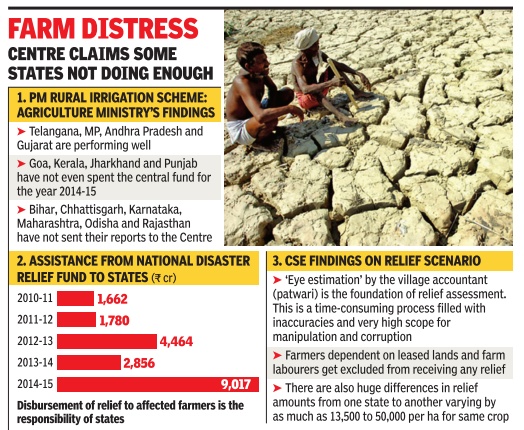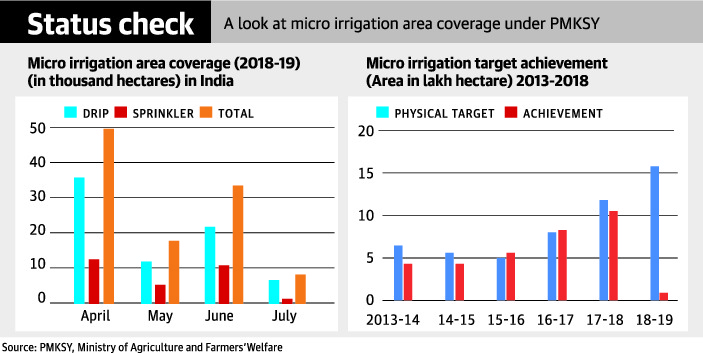Irrigation: India
This is a collection of articles archived for the excellence of their content. |
Contents |
Irrigation in rural areas
2010-15, state-wise

Graphic courtesy: The Times of India, November 27, 2015
See graphic:
Rural irrigation, the good and poor performing states; assistance from national disaster relief fund to states, 2010-15
Minor irrigation
2017 – 22
Vishwa Mohan, August 28, 2023: The Times of India

From: Vishwa Mohan, August 28, 2023: The Times of India
NEW DELHI: Amid variability of monsoon rainfall and unpredictability of its spatial distribution, India’s dependence on minor irrigation (MI) facilities has increased in the past few years pushing private entities including farmers and communities mostly, to create an additional 1.42 million such facilities in the four years between 2013-14 and 2017-18 in an attempt to drought-proof agriculture.
The sixth MI census report shows that the country had 23.14 million MI facilities in 2017-18 compared to 21.72 MI facilities in 2013-14 with groundwater irrigation infrastructure consistently logging over 94% of such infrastructure.
Though high share of groundwater for farming operations leads to fast depletion of groundwater, it at least guards the farmers from uncertainties of monsoon rainfall. Current year’s kharif (summer sown crops) acreage is an example. Farmers were able to increase the sown area of even water-guzzling paddy despite monsoon rainfall deficit of 8%.
Uttar Pradesh possesses the largest number of MI facilities followed by Maharashtra, Madhya Pradesh, Tamil Nadu and Telangana. Leading states in groundwater schemes are Uttar Pradesh, Maharashtra, Madhya Pradesh, Tamil Nadu and Telangana whereas Maharashtra, Karnataka, Telangana, Odisha and Jharkhand have the highest share of surface water irrigation facilities.
The groundwater schemes comprise of dug-wells, shallow tube wells, medium tube wells and deep tube wells. On the other hand, the surface water irrigation facilities consist of surface flow and surface lift schemes. The census report shows that a majority of MI schemes (96.6%) are under private ownership. Most MI structures are, therefore, owned by individual farmers or groups of farmers and hence it has maximum outreach for irrigation purposes.
“Within this, small and marginal farmers (having less than 2 hectares of land) still own a major share of MI schemes. This underlines the need for strengthening the network of MI structures for irrigation purposes in the country for improving the livelihood of small and marginal farmers,” said the report.
Both groundwater and surface water facilities have increased by 6.9% and 1.2%, respectively, in 2017-18 over 2013-14. In groundwater schemes, the share of private entities in the ownership is 98.3% whereas in surface water schemes the respective share is 64.2%.
Dug-wells have the highest share in MI schemes followed by shallow tube-wells, medium tube-wells and deep tube-wells. Maharashtra is the leading state in dug-wells, surface flow and surface lift schemes while Uttar Pradesh, Karnataka and Punjab are the leading states in shallow tube-wells, medium tubewells and deep tube-wells, respectively.
The Centre has been conducting census of minor irrigation schemes since the 1986-87 reference year. The 6th MI census work was delayed due to the Covid-19 pandemic.
Schemes
Pradhan Mantri Krishi Sinchai Yojana

Micro irrigation target achievement, 2013-18
From: July 23, 2018: The Hindu
See graphic:
Micro irrigation area coverage, 2018-19- April-July;
Micro irrigation target achievement, 2013-18